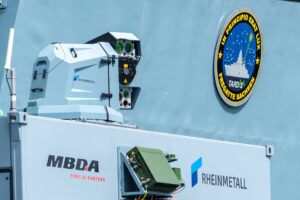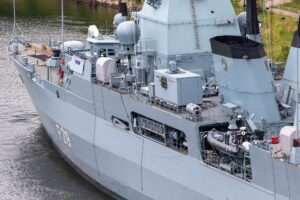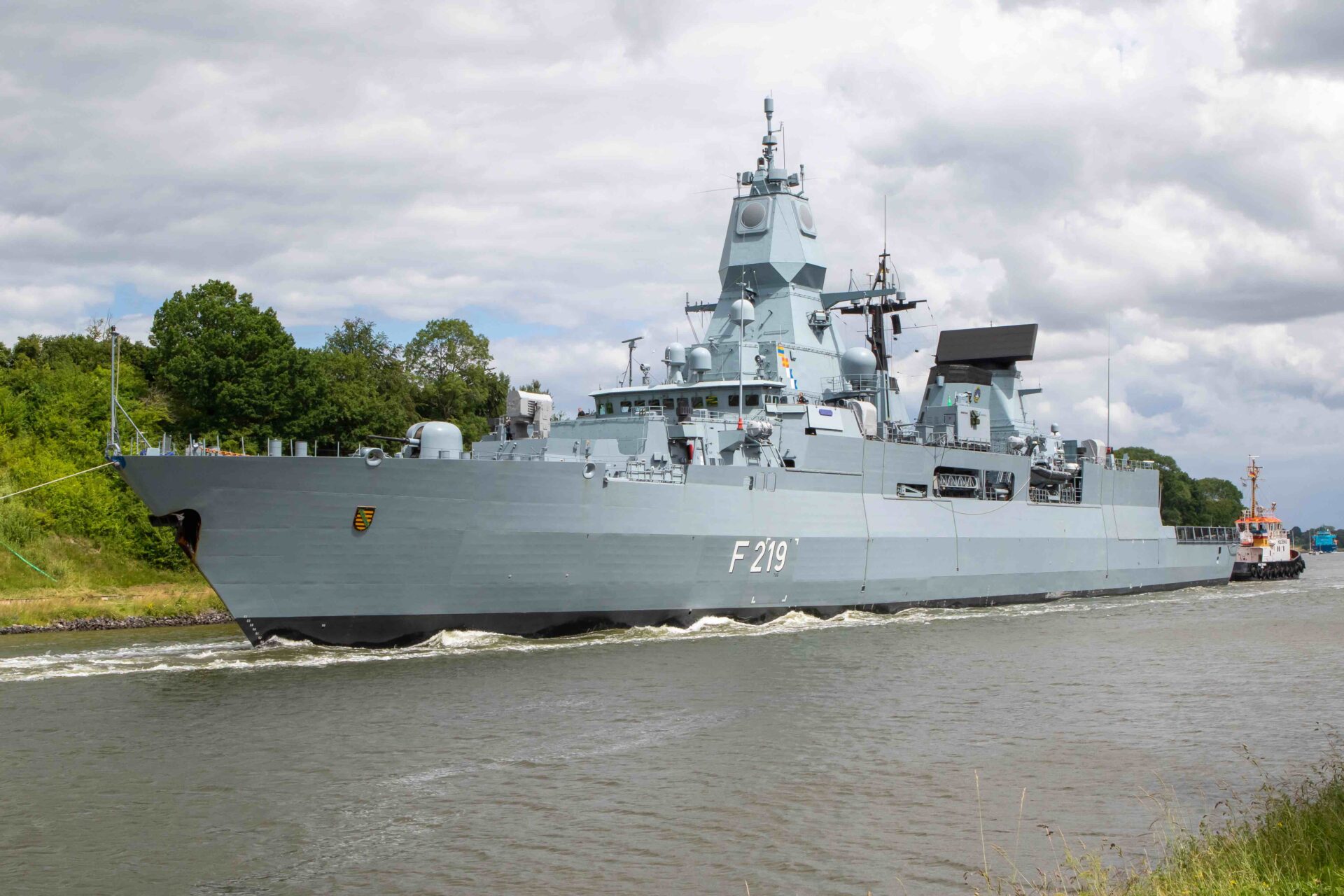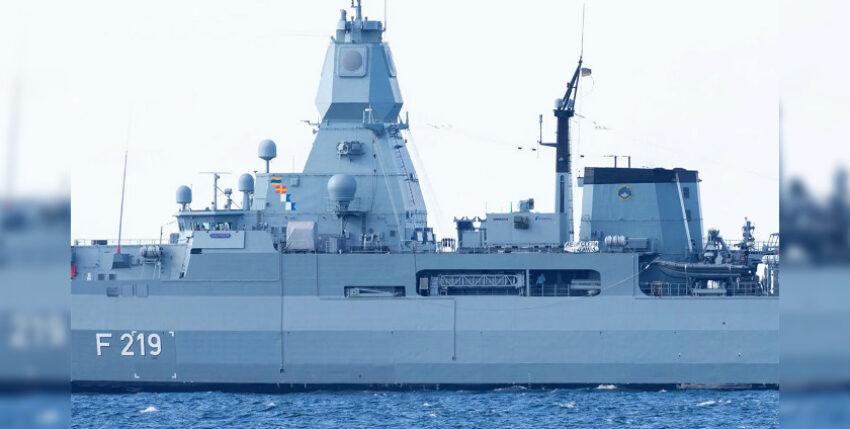[et_pb_section fb_built="1" _builder_version="4.16" global_colors_info="{}"][et_pb_row _builder_version="4.18.0" background_size="initial" background_position="top_left" background_repeat="repeat" global_colors_info="{}"][et_pb_column type="4_4" _builder_version="4.16" custom_padding="|||" global_colors_info="{}" custom_padding__hover="|||"][et_pb_text admin_label="Text" _builder_version="4.18.0" background_size="initial" background_position="top_left" background_repeat="repeat" global_colors_info="{}"]
Update from 27 October 2022
In August 2022, the Bundeswehr deployed a high-energy laser as a weapon from a German warship for the first time in its history: During system testing, the frigate "Sachsen" successfully fought drones at close and close range in the Putlos restricted area on 30 August 2022.
Testing of this new weapon will continue until mid-2023. In the following test campaigns, the demonstrator will be challenged in more complex scenarios in order to derive and implement the need for action on the way to a fully functional, operational laser weapon.
Original article from 12.07.2022
After participating in BALTOPS22, the frigate FGS Sachsen (F 219, type ship of the F124 class) moored at the naval arsenal in Kiel on 17 June 2022, where it was fitted with a high-energy laser weapon from Rheinmetall/MBDA for testing purposes until 24 June 2022. The high-energy laser was installed amidships on the port side together with a system container.

Order
At the beginning of 2021, the Federal Office of Bundeswehr Equipment, Information Technology and In-Service Support (BAAINBw) commissioned the consortium consisting of Rheinmetall Waffe Munition and MBDA Deutschland to create, integrate and support the testing of a laser weapon demonstrator in a maritime environment.
Responsibilities
MBDA Germany is responsible for tracking, the control console and connecting the laser weapon demonstrator to the guidance system. Rheinmetall is responsible for the laser weapon station, the beam guidance system as well as cooling and integration of the laser weapon demonstrator into the project container of the laser source demonstrator. On board the frigate Sachsen, the demonstrator will be used to test the interaction of sensor technology, the command/weapon deployment system and the effector as well as the rules of engagement on board the frigate.

Testing off Eckernförde
After leaving the Kiel naval arsenal, the 143-metre-long, 5,800-tonne displacement frigate moved to the Eckernförde naval base, where it remained until the evening of 27 June 2022. The Sachsen then spent a week until 4 July 2022 testing the high-energy laser in Eckernförde Bay and in restricted areas of the Wehrtechnische Dienststelle 71 (WTD71) off Surendorf.
During the trials, a large warning sign "KEEP CLEAR - TURN AWAY" was displayed on the port and starboard sides of the frigate for other people taking part in maritime traffic outside the restricted areas.
[/et_pb_text][et_pb_gallery gallery_ids="21060,21059" _builder_version="4.17.4" _module_preset="default" global_colors_info="{}"][/et_pb_gallery][et_pb_text _builder_version="4.17.4" _module_preset="default" global_colors_info="{}"]Home through the canal
On 5 July 2022, the ship moved through the Kiel Canal to Wilhelmshaven. After the upcoming holiday phase, the crew is preparing for the next shipyard phase of the frigate Sachsen.

Source: Michael Nitz, http://www.naval-press-service.de
All photos: copyright by Michael Nitz, Naval Press Service, July 2022
Editor's note: Naval Press Service (Michael Nitz) offers a wide range of high-resolution images of almost all the world's navies. Spectacular photos are also included - it's worth taking a look!
[/et_pb_text][/et_pb_column][/et_pb_row][/et_pb_section]











One Response
Congratulations to the companies involved, the Bundeswehr and especially the Navy. It has been a long road to this system trial. It took some time for the two companies with their different realisation technologies to come together. But it is only possible to realise highly complex technologies, which are also very cost-intensive, through cooperation.
It all started "several years ago" with the search for a land-based C-RAM (Counter-Rocket Artillery Mortar) system and, for the navy, with the search for a high-precision weapon that would make it possible to act selectively, e.g. against the propulsion systems of speedboats. It was only relatively late that drone defence was added, certainly also born out of necessity, as it is not only Ukraine that has problems with defence against these threats. "Drone defence" has been a concern for the armed forces for years without a real solution being found. I think there is now a light at the end of the tunnel.
But one thing is clear: using a laser against drones is different from using a laser against guided missiles. I don't think the latter will be possible for many years yet. Considerable research and financial resources are still required here. The navy will therefore continue to rely on the tried and tested RAM - Rolling Airframe Missile - weapon system for many years to come (see report on this page).